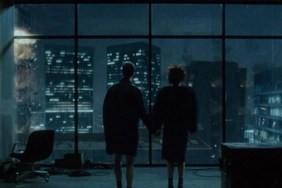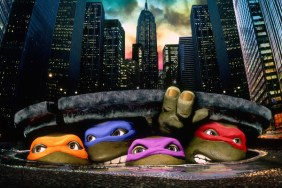The concept for Sean Stone’s Greystone Park isn’t bad. I am personally quite fascinated with mental institutions and their history. I would be the first one to recommend films like the ground-breaking Titicut Follies (Frederick Wiseman, 1967), Session 9 (Brad Anderson, 2001), and even Martin Scorsese’s much-maligned Shutter Island (2010). However, I would be remiss in my fascination for this area of history if I recommended this film, as it is not a decent study or reasonable addition to the collection of films. While it may work for people who are interested in the “hand-held camera” genre that has become quite popular as of late and it may also have an appeal to audiences who carry a torch for the genre that has been labeled as “found footage,” Greystone Park was a film that, tragically, could not decide what it wanted to be and in that regard left me disappointed. The basic problem with this film lies in the disparity between the non-narrative, more filmic aspects and the areas of the film that seem to want to correspond to the “reality” being shown to the by the hand-held shooting style.
According to the film’s creators, this film is a conduit through which the experienced supernatural phenomenon has been recorded and may be viewed. Greystone Park, while scripted, is also based upon real happenings, and the first person camera-work and urgency of the film itself is supposed to convey this. Unfortunately, due to the fact that large portions of the film are almost too dark to watch, this lessens the dramatic value. While the film is supposed to be realistic, and exploring abandoned buildings rarely promises power or lighting, it was difficult as a viewer to become attached to characters or situations that I could not make out.
As the film opens, there are visual documents, footage and information about mental asylums, institutions and the nightmarish things that occurred. For someone that enjoys history and those items, and knows a bit about it, I thought that was a great start. Tragically, this gets left in the wayside in favor of the first-person experience, as though the film was laying the groundwork for something that it never became. Even more frustrating was the amazing psychedelic sequence edited into the film at a very key moment. I was quite fascinated by this and felt like the rest of the film would have benefitted greatly from more of the creative “filmmaker” aspect and less of the “real-life-show-the-phenomenon” elements.
The film’s storyline follows three characters, Sean, Alex and Antonella, as they explore the inner depths of the deserted grounds of the mental institution formerly known as Greystone Park. As they get deeper with the exploration, each of the young adults begins to succumb to different affectations that seem to be caused by the building and the paranormal activities happening inside the structure they are exploring. Through the use of first person camera work and hand-held devices, the film strives for a sense of documentary-style realism while still attempting to communicate the existence of paranormal activity.
Greystone Park succeeds in the fact that its structure is as schizophrenic as the inmates that may have once been housed in the building the characters are exploring. It cannot decide whether to secure itself in a film based upon linear fictional narrative, a hand-held “what’s gonna happen next” zone or a visually hypnotic (and not altogether unattractive) synthesis of paranormal activity. The film seems to be paying homage to various other films of this type while mixing their narratives together in one big pot that belonged to another kitchen.








